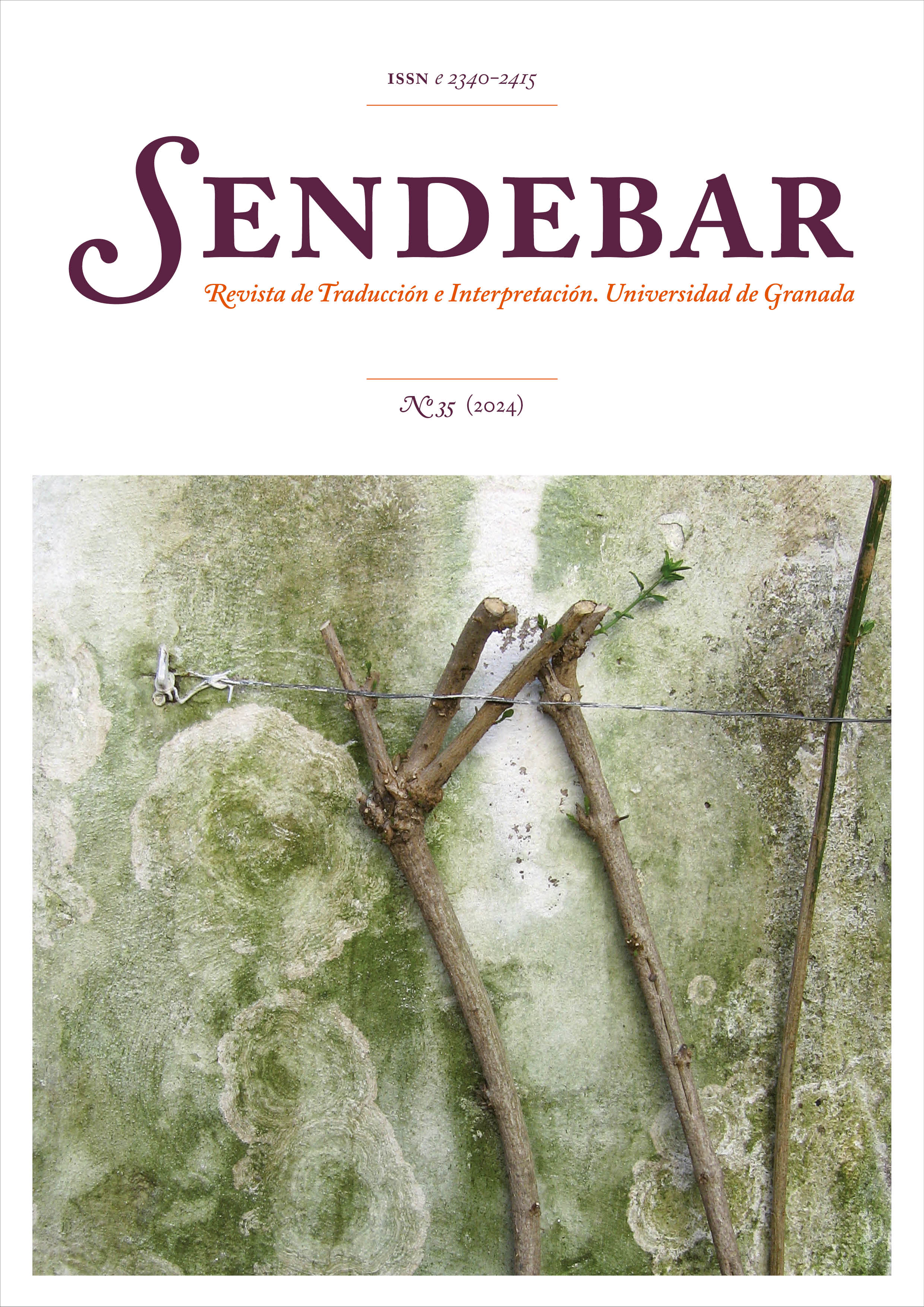Explicitation Versus Reduction of Target Text in Audiovisual Voice-Over Translation
DOI:
https://doi.org/10.30827/sendebar.v35.29941Keywords:
explicitation, audiovisual translation, voiceover version, text reduction, translation universalsAbstract
The article describes a preliminary study conducted as part of a broader project regarding the phenomenon of explicitation in audiovisual translation. Following a brief theoretical introduction on the determinants of voiceover modality in audiovisual translation and selected issues in the field of explicitation, the article presents the results of an analysis of the explicitation surface manifestations according to the taxonomy proposed by Perego (2003), based on the reasons for its emergence (i.e., as a result of cultural differences, lexicalization of non--verbal content, or the need to reduce the target text). Analysis of the cited examples illustrates the most commonly used techniques enabling text reduction while emphasizing certain content, and answers the research questions posed at the outset, i.e. Does explicitation occur in the voice-over modality of translation despite probable reduction of the text? If it does occur - what are its surface manifestations and which of these are dominant?
Downloads
References
Baker, M. (2018). In other words: A coursebook on translation (3rd ed.). Routledge.
Blum-Kulka, S. (1986). Shifts of cohesion and coherence in translation. In J. House-Edmondson & S. Blum-Kulka (Eds.), Interlingual and intercultural communication: Discourse and cognition in translation (pp. 17-37). Gunter Narr Verlag.
Chaume, F. (2013). Research paths in audiovisual translation. In C. Millán & F. Bartrina (Eds.), The Routledge handbook of translation studies (pp. 288-302). Routledge.
Data-Bukowska, E. (2016). Eksplicytacja w nieprofesjonalnym przekładzie szwedzko-polskim: Perspektywa kognitywna. Wydawnictwo Uniwersytetu Jagiellońskiego.
Díaz Cintas, J., & Remael, A. (2007). Audiovisual translation: Subtitling. St. Jerome Publishing.
Franco, E., Matamala, A., & Orero, P. (2010). Voice-over translation: An overview. Peter Lang.
Grice, P. (1975). Logic and conversation. In P. Cole & J. L. Morgan (Eds.), Syntax and semantics: Vol. 3. Speech acts (pp. 41–58). Academic Press.
Gumul, E. (2006). Eksplicytacja a komunikatywność tekstu przekładu. In P. Fast & W. Osadnik (Eds.), Przekład jako komunikat (pp. 19–37). Śląsk.
Gumul, E. (2017). Explicitation in simultaneous interpreting: A study into explicitating behaviour of trainee interpreters. Wydawnictwo Uniwersytetu Śląskiego.
Gumul, E. (2020). Dlaczego tłumacz mówi więcej niż autor?: O eksplicytacji w przekładzie. Rocznik Przekładoznawczy, 15, 177–195. https://doi.org/10.12775/RP.2020.009
House, J. (2004). Explicitness in discourse across languages. In J. House, W. Koller, & K. Schubert (Eds.), Neue Perspektiven in der Übersetzungs- und Dolmetschwissenschaft (pp. 185–208). AKS.
Klaudy, K. (1993). On explicitation hypothesis. In K. Klaudy & J. Kohn (Eds.), Transferre necesse est... Current issues of translation theory (pp. 69–77). Daniel Berzsenyi College.
Klaudy, K. (1996). Back-translation as a tool for detecting explicitation strategies in translation. In K. Klaudy, J. Lambert, & A. Sohár (Eds.), Translation studies in Hungary (pp. 99–114). Scholastica.
Klaudy, K. (2011). Explicitation. In M. Baker (Ed.), Routledge encyclopaedia of translation studies (pp. 104–107). Routledge.
Kovačič, I. (1998). Language in the media: A new challenge for translator trainers. In Y. Gambier (Ed.), Translating for the media: Papers from the International Conference (Berlin, 22–23 November 1996) (pp. 123–129). Centre for Translation and Interpreting.
Mayoral, R., Kelly, D., & Gallardo, N. (1988). Concept of constrained translation: Non-linguistic perspectives of translation. Meta, 33(3), 356–367. https://doi.org/10.7202/003608ar
Molina, L., & Hurtado Albir, A. (2002). Translation techniques revisited: A dynamic and functionalist approach. Meta: Journal des traducteurs/Translators’ Journal, 47(4), 498–512. https://doi.org/10.7202/008033ar
Orero, P. (2006). Synchronization in voice-over. In J. M. Bravo Gonzalo (Ed.), A new spectrum of translation studies (pp. 255–264). Publicaciones de la Universidad de Valladolid.
Pápai, V. (2004). Explicitation: A universal of translated text? In A. Mauranen & P. Kujamäki (Eds.), Translation universals: Do they exist? (pp. 143–164). John Benjamins.
Perego, E. (2003). Evidence of explicitation in subtitling: Towards a categorisation. Across Languages and Cultures: A Multidisciplinary Journal for Translation and Interpreting Studies, 4(1), 63–88.
Séguinot, C. (1988). Pragmatics and the explicitation hypothesis. TTR: Traduction, Terminologie, Rédaction, 1(2), 106–114.
Tomaszkiewicz, T. (2008). Przekład audiowizualny. Wydawnictwo Naukowe PWN.
Vinay, J.-P., & Darbelnet, J. (1958/1995). Comparative stylistics of French and English: A methodology for translation. John Benjamins.
Zabalbeascoa, P. (2008). The nature of the audiovisual text and its parameters. In J. Díaz Cintas (Ed.), The didactics of audiovisual translation (pp. 21–37). John Benjamins Publishing Company.
Downloads
Published
How to Cite
Issue
Section
License
Copyright (c) 2024 Aleksandra Hasior

This work is licensed under a Creative Commons Attribution-NonCommercial 4.0 International License.
Terminos de Licencia Sendebar.

















